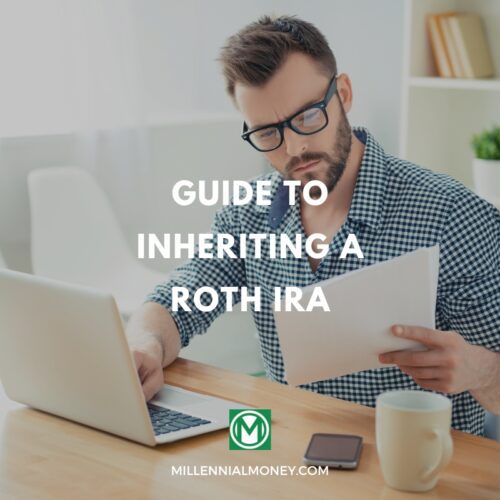Saving for retirement is a crucial aspect of financial planning. One common question is, “Can I contribute to a 401(k) and an individual retirement account (IRA) at the same time?” The simple answer is yes, you can. Both types of retirement accounts offer unique benefits.
You might wonder if it’s legal or even beneficial to contribute to both simultaneously.
This post will explain why contributing to a 401(k) and an IRA can be a wise financial move. We’ll also look at 401(k) and IRA contribution limits, tax strategies, and deduction limits so you can make an informed choice that fits your needs.
Contribution Limits for 401(k)
The maximum contribution limit for a 401(k) plan is the total amount of money you can contribute to your account in a given year. It’s important to note that the Internal Revenue Service (IRS) sets this limit, which may change yearly.
For 2023, the maximum contribution limit for a 401(k) plan is $22,500. You can contribute up to $22,500 of your pre-tax income to your 401(k) account without worrying about penalties or tax issues. By contributing the maximum amount allowed, you can maximize your retirement savings and take advantage of potential tax benefits.
If you’re 50 or older, you can make additional contributions to your 401(k) account, known as catch-up contributions. These catch-up contributions allow you to save more for retirement and potentially make up for any years you didn’t contribute the maximum amount.
For 2023, the catch-up contribution limit for a 401(k) plan is $6,500. If you’re 50 or older, you can contribute up to $6,500 plus the $22,500 maximum contribution limit. Catch-up contributions can boost your retirement savings and help you reach your goals faster.
Learn More:
Contribution Limits for IRA
The maximum contribution limit for an IRA is the maximum amount of money you can contribute to your account in a given year. As of 2023, the maximum contribution limit for traditional and Roth IRAs is $6,500. You can contribute up to $6,500 annually to your IRA, regardless of age or income level.
However, it’s important to note that this limit is subject to change. The IRS periodically adjusts the contribution limits to account for inflation. Therefore, it’s always a good idea to check the latest updates from the IRS to ensure you are aware of any changes to the maximum contribution limit.
Catch-up contributions are additional contributions individuals aged 50 and above can make to their IRAs. These extra contributions are designed to help older individuals boost their retirement savings as they have less time to accumulate wealth compared to their younger counterparts.
As of 2023, the catch-up contribution limit for both traditional and Roth IRAs is $1,000. Individuals aged 50 and above can contribute up to $7,500 per year to their IRAs, including the regular maximum contribution limit of $6,500 and the additional catch-up contribution of $1,000.
Learn More:
Can You Contribute to a 401(k) and IRA?
Many individuals wonder if they can contribute to a 401(k) and an IRA when they get serious about retirement planning. The good news is, yes, you can contribute to both! However, you need to be aware of certain eligibility requirements and income limitations. Let’s delve into the details.
Eligibility Requirements
To contribute to a 401(k), you must be an employee of a company that offers this retirement plan. Typically, employers set specific eligibility criteria, such as a minimum age or a minimum length of service. It’s crucial to check with your employer to understand their particular requirements.
On the other hand, anyone with earned income can contribute to an IRA (Individual Retirement Account). If you have income from a job or are self-employed, you can contribute to an IRA, regardless of whether you can access a 401(k) through your employer.
Income Limitations for IRA Contributions
While there are no income limitations for contributing to a 401(k), IRA contributions can be subject to income restrictions, depending on your IRA type. Here are the two main types of IRAs and their corresponding income limitations for contributions:
- Traditional IRA: For individuals with a workplace retirement plan, the deductibility of traditional IRA contributions may be limited based on their modified adjusted gross income (MAGI). Here are the income limits for the tax year 2023:
- Single filers or heads of household with a MAGI of $68,000 or less can make fully deductible contributions.
- Single filers or heads of household with a MAGI between $68,000 and $77,999 can make partial deductible contributions.
- Single filers or heads of households with a MAGI above $78,000 cannot deduct their contributions.
- For married couples filing jointly, if the spouse contributing to the IRA has a retirement plan at work, the income limits are as follows:
- MAGI of $109,000 or less allows for fully deductible contributions.
- MAGI between $109,000 and $129,000 allows for a partial deduction.
- MAGI above $129,000 does not allow for deductible contributions.
- Roth IRA: Roth IRA contributions are not tax-deductible, but they offer the advantage of tax-free withdrawals in retirement. However, there are income limitations for contributing to a Roth IRA. Here are the income limits for the tax year 2023:
- Single filers or heads of household with a MAGI of $138,000 or less can make full contributions.
- Single filers or heads of households with a MAGI between $139,500 and $151,500 can make partial contributions.
- Single filers or heads of households with a MAGI above $153,500 aren’t eligible to contribute to a Roth IRA.
- For married couples filing jointly, the income limits are as follows:
- MAGI of $218,000 or less allows for full contributions.
- MAGI between $218,000 and $227,000 allows for partial contributions.
- MAGI above $228,000 doesn’t allow for Roth IRA contributions.
Learn More:
Benefits of Contributing to a 401(k) and IRA
There are a few benefits of contributing to a retirement plan. We’ve identified the most salient advantages below.
Diversification of Retirement Savings
By contributing to both retirement accounts, you spread your savings across different investment vehicles, such as stocks, bonds, and mutual funds.
Think of it this way: if you only contribute to a 401(k), your retirement savings solely depend on the performance of the investments within that account. However, you can invest in a broader range of assets by contributing to an IRA.
Maximizing Tax Advantages
A 401(k) is an employer-sponsored retirement account that allows you to contribute pre-tax dollars. Your contributions are deducted from your taxable income, reducing your current tax bill. Additionally, any growth on your 401(k) investments is tax-deferred until you withdraw the funds in retirement.
On the other hand, an IRA is an individual retirement account you can open and contribute to independently. Depending on the type of IRA you choose (traditional or Roth), you may enjoy different tax benefits.
Contributing to a 401(k) and an IRA can take advantage of each account’s unique tax benefits.
Key Considerations for Investing in a 401(k) and IRA
When it comes to contributing to a retirement savings plan, such as a 401(k) or an IRA, there are several factors to consider. In this section, we will explore key considerations and strategies to help you make the most of your contributions.
Employer Matching Contributions
One important consideration is whether your employer offers a workplace retirement plan and if they match your contributions. Employer matching is free money that can significantly boost your retirement savings. If your employer offers a company match, it is generally wise to contribute at least enough to take full advantage of this benefit.
For example, let’s say your employer offers a 50% company match on up to 6% of your salary. If you earn $50,000 annually and contribute 6% ($3,000) to your 401(k), your employer will match half of that amount, providing an additional $1,500 towards your retirement savings.
Prioritizing Contribution Allocation
Another strategy to consider is how to allocate your contributions between a 401(k) and an IRA. Both types of accounts have advantages and limitations, so it’s important to understand your options and prioritize based on your circumstances.
If your employer offers a 401(k) match, we recommend you contribute enough to receive the full match before considering an IRA. The match provides an immediate return on your investment, whereas IRAs are longer-term investments.
After maximizing the employer match, you can consider contributing to an IRA. IRAs offer a more comprehensive range of investment options and may provide certain tax breaks, depending on whether you choose a traditional or Roth IRA.
Roth vs. Traditional IRA
Choosing between a traditional IRA and a Roth IRA is important, but it depends on your current and future tax situation.
With a traditional IRA, contributions are typically tax-deductible, meaning you can reduce your taxable income in the year you contribute. However, withdrawals during retirement are subject to income tax.
On the other hand, contributions to a Roth IRA are made with after-tax dollars, so they aren’t tax-deductible. However, you can withdraw tax-free funds during retirement, including contributions and earnings.
Deciding between a traditional and Roth IRA involves considering your current tax bracket, expected future tax rates, and long-term retirement goals. It’s worth consulting with a financial advisor to determine which option suits your situation.
Potential Penalties and Tax Implications
When contributing to a 401(k) and an IRA, it’s crucial to consider the potential penalties and tax implications. Understanding these factors will help you make informed decisions and maximize the benefits of your retirement savings.
In this section, we’ll discuss the excess contributions penalty, early withdrawal penalties, and the tax implications of distributions.
Excess Contributions Penalty
Making excessive contributions to your retirement accounts can result in penalties. The Internal Revenue Service (IRS) sets an annual contribution threshold for 401(k) plans and IRAs. You may be subject to an excess contributions penalty if you contribute more than the allowable limit.
For 401(k) plans, the current annual contribution limit is $22,500 for individuals under 50 and $27,000 for those aged 50 and above. If you exceed these thresholds, you must remove the excess contributions and any associated earnings before the tax filing deadline for that year. Failure to do so can lead to a 6% penalty on the excess amount.
Similarly, IRAs have contribution limits of $6,500 for individuals under 50 and $7,500 for those aged 50 and above. If you contribute more than these limits, you must withdraw the excess by the tax filing deadline to avoid a 6% penalty.
Early Withdrawal Penalties
Withdrawing funds from your retirement accounts before age can result in early withdrawal penalties. These penalties are in place to encourage individuals to use their retirement savings for their intended purpose: funding their retirement years.
For 401(k) plans, if you withdraw funds before the age of 59½, you may be subject to a 10% early withdrawal penalty and income taxes on the withdrawn amount. However, this penalty has some exceptions, such as for certain medical expenses or if you become permanently disabled.
For traditional IRAs, the early withdrawal penalty applies if you withdraw funds before 59½, resulting in a 10% penalty plus income taxes. However, a few exceptions exist, such as using the funds for higher education expenses or purchasing your first home.
Tax Implications of Distributions
When you retire and start taking distributions from your retirement accounts, you need to be aware of the tax implications. The tax treatment of these distributions depends on your account type: traditional or Roth.
The distributions are generally subject to income tax for traditional 401(k) plans and traditional IRAs. The amount you withdraw is added to your annual taxable income and taxed at your ordinary income tax rate. It’s important to consider this when planning your retirement income and budgeting for taxes.
On the other hand, distributions from Roth 401(k) plans and Roth IRAs are typically tax-free, provided you meet certain requirements. Since you make these contributions with after-tax dollars, qualified distributions aren’t subject to income tax, which can be advantageous for individuals who expect to be in a higher tax bracket during retirement.
Understanding the potential penalties and tax implications of contributing to a 401(k) and an IRA is crucial for effective retirement planning. By staying within the contribution limits and being mindful of withdrawal rules, you can maximize your retirement savings while avoiding unnecessary penalties and taxes.
Bottom Line
In conclusion, it is possible to contribute to both a 401(k) and an IRA. These retirement savings accounts serve different purposes and have separate contribution limits, but they can work together to help you achieve your long-term financial goals. The key is understanding each account’s rules and benefits and maximizing their opportunities.
By contributing to a 401(k), you can take advantage of employer-matching contributions and potentially reduce your taxable income. It can be a great way to jumpstart your retirement savings, especially if your employer offers a generous matching program.
A qualified financial planner can help you discover the best contribution strategies for your situation so you can make the most of your retirement savings.





No comments yet. Add your own